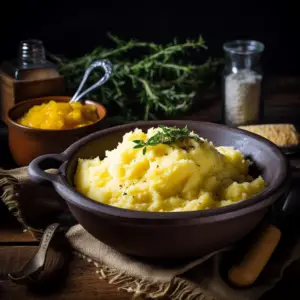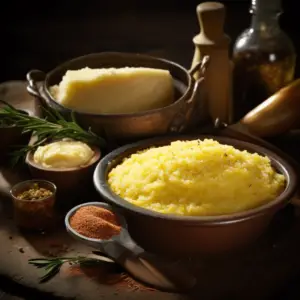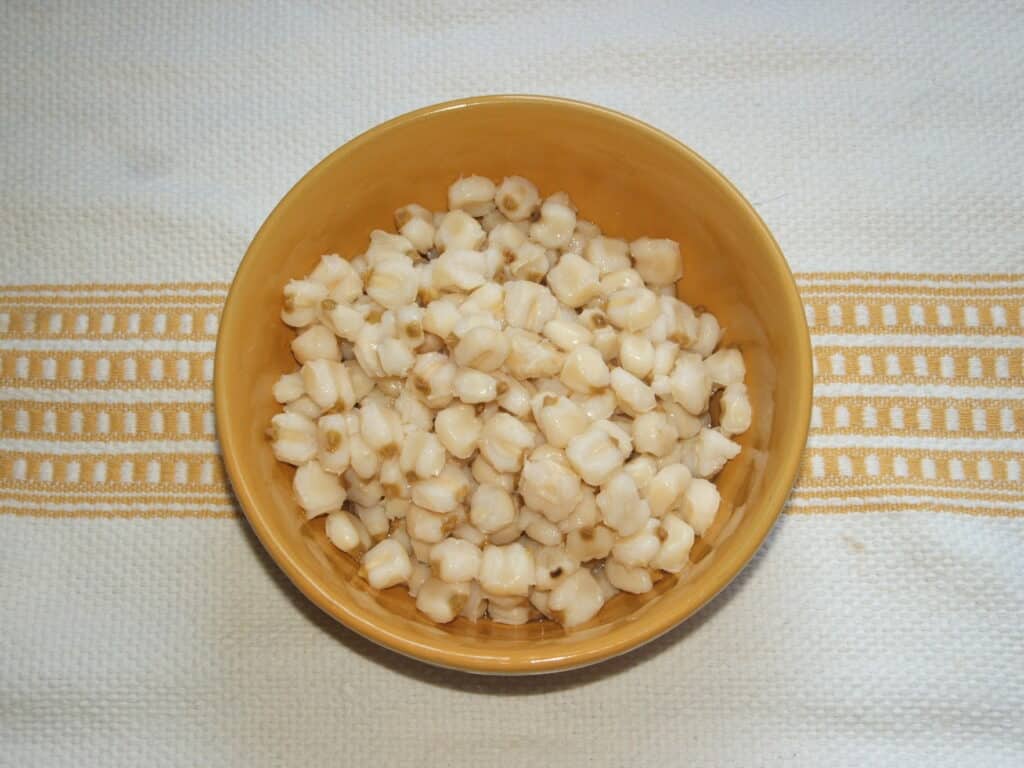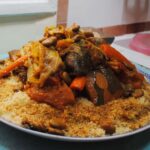The world of ground corn is wide. There are many types of meals that can be prepared from ground corn. And if ground corn is not native to your home, you may be confused by the different dishes that come from it—the famous grits, cornmeal, polenta, hominy, etc.
Grits originated from South America, which is a staple food. This dish was commonly eaten as breakfast, but you can eat it anytime as a meal or side dish. Like grits, hominy is a dish made from corn and is a southern staple. And although the two are prepared from corn, they’re not entirely the same. Read on to learn about grits, hominy, and their differences.
Table of Contents
Hominy vs Grits: Overview

Grits is a dish made from coarsely ground corn kernels, dent corn. The dent corn kernels are dried and grounded to make grits.
Sometimes the dent corn kernels are not grounded and undergo nixtamalization. Nixtamalization involves soaking the dried dent corn kernels in an alkali solution and removing the outer hulls. This results in nixtamalized corn called hominy. Hominy can be cooked as they are or ground to make hominy grits.
Thus, grits is a dish prepared from coarsely ground corn, whereas hominy is nixtamalized corn that may be cooked as it is or be used to make grits.
Hominy
Hominy is a nixtamalized dried corn kernel. Nixtamalization entails soaking grains in an alkali solution to soften them and leads to other changes. The alkali solution used can be lime or lye. During nixtamalization, the alkali solution used to soak dried corn kernels softens the kernel’s pericarp. It also breaks down hemicellulose present in the corn kernels.
After soaking, the outer husks of the corn kernels are removed, and the corn kernels are washed and dried. Once dried, the corn kernels become softer and easier to grind. After that, you can use them to prepare your preferred dish. The nixtamalization process helps improve the flavor and aroma of the corn kernels.
Hominy can be used in many ways in Mexican cuisine. For instance, it can be used whole, ground finely and coarsely to create masa and hominy grits.
Positive Effects Of Nixtamalization
Nixtamalization of dent corn kernels brings about various positive changes. They include:
- Softening of the corn kernels hulls, making their removal process easier.
- Increases the size of corn kernels. The corn kernels increase in size after nixtamalization.
- Moreover, nixtamalization improves the corn kernels’ flavor, aroma, and color.
- The nixtamalization process also releases niacin found inside the corn kernels. This increases its bioavailability when consumed.
- The alkali used in nixtamalization is a good calcium source.
Grits
Grits, a popular meal, is prepared from dried corn kernels. The corn kernels used to make grit are the dent corn kernels. This type of corn contains more starch than other sweet corn varieties. The dent corn kernels are grounded to a coarse texture to make grits.
The dent corn can also be milled and then coarsely ground to make quick grits that are easy to prepare and take less time than whole grain grits. Grits can also be prepared from hominy.
Like grits, there are other types of dishes made from coarsely ground corn. And a good example is polenta. Polenta is made the same way as grits but uses another type of corn, flint corn, instead of dent corn.
Making grits is pretty simple. To cook them, boil the grits in water or milk. Next, cook the grits until they are creamy with a porridge-like consistency. You can choose to top the dish with butter, shrimp, cheese, or sausages.
Grits can be sweet or savory, and may be eaten as breakfast, main meal, or as a side dish with other meals.
Types Of Grits
There are various types of grits depending on several factors. One, the type of corn used results in different types of grits. E.g., polenta made from flint corn and grits made from dent corn.
The method used during processing can also result in various types of grits. Examples include:
Stone-ground grits – these are whole grains ground using stones. They have a coarser texture and retain the germ, giving them all the nutrients present in whole grains. Stone-ground grits have a rich flavor and aroma and take longer to cook. They also have a low shelf life.
Regular grits – regular grits are medium ground, not so coarse and not so fine, somewhere in the middle. These grits take a relatively shorter time to cook than the stone-ground grits.
Quick grits – quick grits are finely ground and take a shorter time to cook than regular and stone-ground grits.
Instant grits – instant grits are precooked and dehydrated. This type of grit takes the shortest time to cook.
Differences Between Hominy And Grits

Processing Method
Hominy is processed using nixtamalization, which involves soaking corn kernels in an alkali solution. The soaked corn kernels are removed from the solution, washed and dried.
Grits are made by coarsely grinding previously dried dent corn kernels into a coarse texture.
Culinary Use
Hominy can be used as it is to make various dishes. It can also be coarsely ground to make grits, known as hominy grits.
On the other hand, grits can be made cooked using milk or water, thickened to achieve a porridge-like consistency, and then served with shrimps or topped with butter as a meal or side dish.
Texture
The nixtamalization process causes hominy to have a softer texture. Grits are usually coarsely ground and, therefore, have a coarse texture.
Conclusion
Hominy is a nixtamalized dent corn kernel that can be cooked and eaten as it is or coarsely grounded to make hominy grits. This type of cornmeal is softer and has more flavor and aroma. Hominy also has more nutrient bioavailability, thanks to the nixtamalization process.
Grits are previously dried and coarsely ground whole grains of dent corn kernels. They are often prepared by boiling them in water or milk, thickening them to a porridge-like consistency. Grits can be eaten as a meal or a side dish. They are best served with shrimp or topped with butter.


